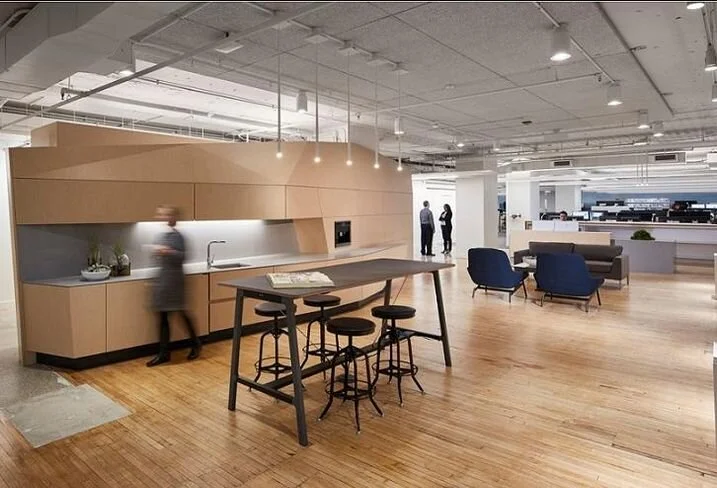No commercial real estate sector has emptied out more amid the coronavirus pandemic than office, and its future is also the most uncertain.
After months of working from home, millions will someday return to their offices with radically different expectations and worries than they had before the crisis. How landlords and employers will respond to those concerns isn’t known, but trends in office design that took hold over the past decade may need to be reversed.
Many firms shrank the amount of space allotted to each employee, sometimes reserving the saved space for amenities and common spaces, but it’s likely office workers will no longer feel comfortable sitting in such close quarters, STRS Ohio Senior Acquisition Officer Stephen Janowiak said Thursday during Bisnow’s Chicago Virtual Deep Dish: Office webinar.
Instead of today’s allotment of less than 200 SF per person, the newly reopened offices of the post-pandemic era may have to return to the 1990s-era standard of around 250 SF per person, enough space to allow for the recommended 6 feet of social distance.
But that may not mean an overall increase in office demand, as the past month has opened the eyes of many about the possibilities of working from home.
“We’re in the midst of the largest stay-at-home experiment in history,” JLL Managing Director Corey Siegrist said.
A Colliers report released Thursday afternoon said 84% of 3,000 workers it surveyed around the world would like to keep working remotely at least one day a week when the pandemic fades. Of those who hadn't worked from home prior to the coronavirus' spread, 71% would like to work remotely at least once a week in the future.
“It’s not as effective as if we were all in the studio, but the truth is we’re getting work done,” Eastlake Studio principal Tom Zurowski said. “We figured out how to make it work and adapt. It’s proof that the world is different, but we move on.”
Janowiak added that the past month may have been just a shakedown cruise for teleworking, and even though corporate IT departments have accomplished a lot so far to make it happen, office users may find it even more useful in the future. So far, and especially is its first couple of weeks, working from home meant children getting underfoot and needing attention, along with the tensions involved in being cooped up in the house for weeks.
“It’s not that accurate of a test case for a normal time when the kids are in school and you can occasionally go outside,” he said.
Getting back to that normal won’t happen overnight, and reaching that goal will take patience and sensitivity, IBT Group President and founder Gary Pachucki said. “It’s still a health crisis, so it’s not all about getting back to business.”

